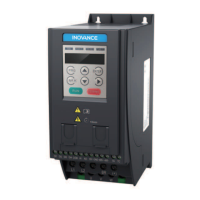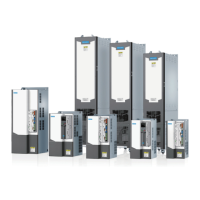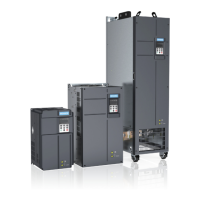Function Application
‑524‑
● 3: Coast to stop
If the running frequency is below the frequency lower limit, the AC drive coasts to
stop.
Para. No. Function Default
Value Range Description
F8‑14
Action when frequency
is below the lower limit
0
0: Run at frequency lower limit
1: Stop
2: Run at zero speed
3: Coast to stop
‑
3.1.2.13 Setting the Main Frequency Through Pulse Reference
When F0‑03 is set to 5, pulse reference is selected as the main frequency source.
When the main frequency source is set to pulse reference (DI5), the pulse reference
must be obtained from multi‑functional input terminal DI5. The pulse reference signal
specifications are: voltage of 9 V to 30 V and frequency of 0 Hz to 100 KHz.
Procedure:
Step 1: Set F0‑03 to 5 to select "pulse reference" as the main frequency source. In this
mode, the pulse reference must be obtained from multi‑functional input terminal DI5.
Step 2: Set F4‑04 to 30 to assign DI5 with the "pulse frequency input" function.
Step 3: Set F0‑07 to 00 to select "main frequency reference" as the frequency
reference superposition.
Step 4: Set the pulse reference curve. Set F4‑28 to F4‑31 to determine the curve
relationship between the pulse frequency input from DI5 and the corresponding
percentage. The relationship is shown as a two‑point straight line.
Figure 3‑26 Parameter settings for pulse input as the main frequency source
Step 5: Set F4‑32 to select the filter time of pulse frequency.
Set this parameter to balance the response speed and the anti‑interference
capability. If quick response is required, reduce the parameter value. If the onsite
interference is high, increase the parameter value.

